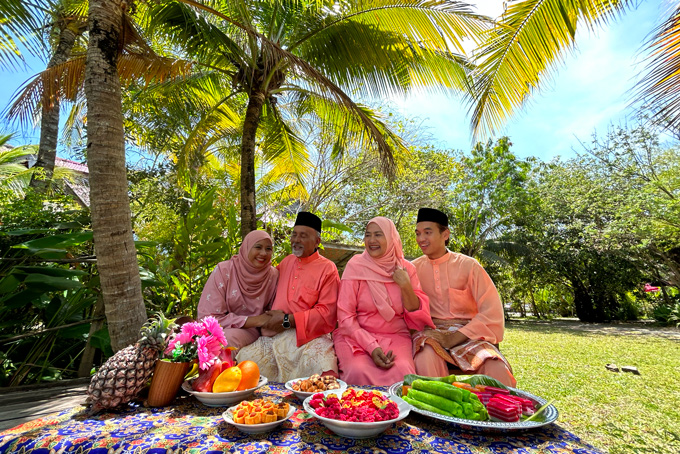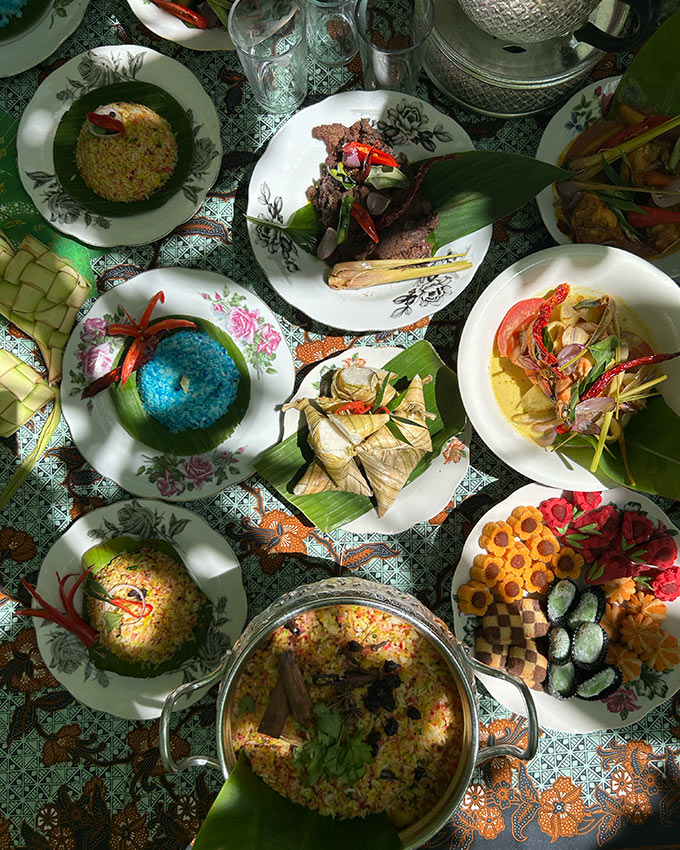The zeitgeist of iPhones has undeniably shifted the way the common man approaches photography. Intimidating as it once was, the idea of shooting without formal training of any sorts, is now easily approached everyday by anyone who has a social media presence. A simple scroll on your Instagram will tell you this much—where your pals seamlessly post eye-grabbing, at times professional stills and videos, all shot on their smartphones, including the most recent iPhone 14’s camera. Sure enough, the Apple device has long alleviated most of the cumbersome woes known to longtime professionals in the field, hence enabling anyone to be able to independently produce content on their own.
With the trusty aide of the almighty iPhone 14’s camera, we’ve managed to successfully capture monumental occasions of our own—from weddings to birthdays to festivities like the imminent Hari Raya Puasa. And despite what we think we know about the handy camera in our pockets, it turns out that there’s always more to uncover, with the smartphone’s extensive ability as well as hidden capabilities programmed within.

From perfecting a flatlay or creating an original collage unbridled with your own artistic freedom, the newest iPhone 14 has made the task at hand exceptionally simple and not to mention, fun. And with Hari Raya Puasa just around the corner, the holiday will no doubt, be a hotbed for precious captures and special memories with your loved ones. Below, some of Singapore and Malaysia’s highly lauded photographers and content creators share their personal tips and tricks—by way of making the most out of the camera’s capabilities.
Portraits in focus

In the iPhone 14, its latest Main camera presents improved image processing—regardless of whether the light is in your favour. And for portraits, that just means a stunning, sharper focus with your subject in the centre. If the 14 Pro is in your hands, you also gain the advanced quad-pixel sensor, with 48 megapixels in its full glory. On the Portrait Mode, iPhone 14’s camera also grants a myriad of lighting settings—from Studio Light to Contour Light—dependent on what your set-up is like. Altering the amount of blur in the background is also possible, with a customisable Depth Control built within. While working with people, photographer Annice Lyn also encourages building a rapport with your models, especially if you aren’t familiar with them. “Capturing special moments takes more than just an iPhone to point and shoot. The process of creation is beyond that and how you interact with your subject matters. You are after all, taking away a piece of them when you take their picture”. She also adds that when shooting in the outdoors, make sure to always lean into natural light.

The photos you shoot can also be interpreted in your own creative way—sans the complicated route of Adobe Photoshop. iPhone 14’s very own Freeform app allows a blank canvas for you to design and create your own collage. By tapping and holding onto a subject in your photo, you are able to etch its entire body out—simply copy and then paste it in the Freeform app. From here on, you may input other elements from other photos as well as text if you want the entire collage to tell a story.
Transitions at work
The entry of Instagram Stories, Reels and TikTok has transformed the way we capture videos in our daily lives. For starters, they all abide by a snappy rule, while shot in a 9 x 16 format. The app, Clips on the iPhone is ideal for editing short-form videos—with a simple interface for stitching individual videos together—in the event that you would like to create a summary of a special day. Photographer YK advises: “Video continuity is important for general flow of the video, so ensure subjects are in similar position, and movement is natural—if you are panning left to right, next video ideally should be left to right too to be smooth.”
When capturing subjects on the move, iPhone 14’s Action Mode reduces the shaky or jerking movement of unstable hands while rendering a smooth, fluid motion onscreen. A fun way to weave transitions into your videos to depict a change of scenery? Use jump-cuts. Make sure the last frame of your first video is close and moving rapidly enough to an object or hand so that it produces an elusive grain, and have your second video begin with the same grain in the same technique, before unveiling the change in setting.
When cameras eat first

Too often, we document our meals, or at times, the assembly of a meal. Content creator Zarnizar offers his very own hacks. First, by turning on Grid in your Camera settings. This way, you can easily divide and centralise your focus. Second, as you attempt a flatlay, you’ll see two crosses pop up. Make sure to angle till these two crosses converge and this would mean your photo is accurately placed at a 90-degree angle.

When it comes to capturing footage of a particular action like a lavish pour of lemak gravy on your plate of rice, head to Settings and activate Burst mode with the volume button. This way, you can hold on to the button with a sturdy hand while the movement is happening. With this Burst, expect to capture the liquid falling mid-air with ample focus. When it comes to cooking videos, Zarnizar also recommends using Slow-Mo to best document the dramatic action in the process.
Upping the ante on video
After experiencing Cinematic mode on the iPhone 14 camera, it’s safe to say your videos will always possess a professional quality. It works best for videos that are shot on landscape, with an astounding ability to toggle between focuses of the subject and its background seamlessly. You may even fixate a focus throughout the length of the video by simply pressing and ensuring a “AF lock” comes into place. To produce a video that tells a story, Jason Goh of @smashpop advises to keep your videos short, within a few seconds for each scene. “When editing, always start the clip when the subject is already moving, and not when the subject is about to move. This will ensure the video appears more natural,” adds the content creator.
All photos are shot on the iPhone 14 Plus at Kunang Kunang.





